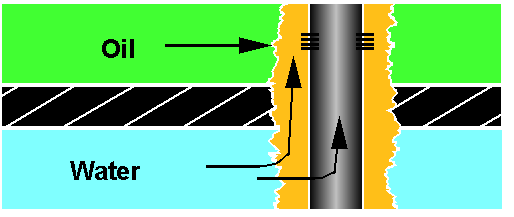Is the Problem Caused by Leaks or Flow Behind Pipe?

Once the operator decides that the water cut is too high considering the remaining reserves and the water is produced via a flow path separate from that of the oil, one should ask whether the excess water production is caused by a relatively easy problem (as listed in Table 1)—in particular, by unrestricted casing leaks or by flow behind pipe. Some of the common methods used to diagnose these problems include
- leak tests/casing integrity tests (e.g., hydro testing)
- temperature surveys,
- flow profiling tools (e.g., radiotracer flow logs, spinner surveys, production logging tools),
- cement bond logs,
- borehole televiewers, and
- noise logs. Refs. 15 and 16 provide detailed descriptions of these methods.
Many of these methods are used during routine surveillance of wells. Therefore, consistent with our proposed strategy, one should begin the diagnostic process by examining information already at hand. If this type of information is not available, then the above methods comprise a list of the first diagnostic methods that should be considered for implementation.
If a problem with unrestricted casing leaks or flow behind pipe (as defined in Table 1 and the subsequent paragraphs) is identified, that problem should be addressed before attempting to solve additional, more difficult problems that may exist. Some engineers disagree with this suggestion—arguing that they wish to apply a water shutoff method that solves multiple types of problems at once. While this fortuitous circumstance occasionally occurs, the optimum solution for treating the different types of problems usually varies considerably. For example, the optimum solution for an unrestricted flow behind pipe problem and that for a fracture that leads to an aquifer may differ considerably in
- desired properties of the blocking agent,
- volume of blocking agent placed, and
- placement method.